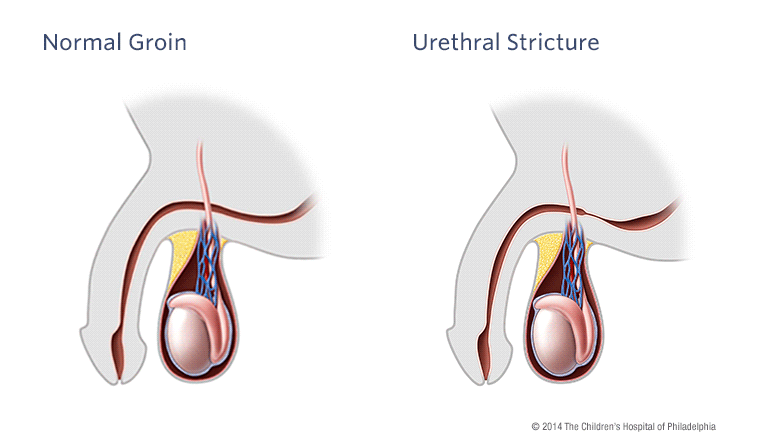
Urethral stricture
Urethra is a hollow tube that connects Urinary bladder to the external urethral opening, urethral meatus.Urethral stricture involves constriction of the urethra. This is usually due to tissue inflammation or the presence of scar tissue.
A straddle injury is a common type of trauma that can lead to urethral stricture. Examples of straddle injuries include falling on a bicycle bar or getting hit in the area close to the scrotum. Pelvic trauma during a road traffic accident is also known to cause complete obliteration of urethra.
Some infections and inflammatory conditions (Balanitis Xerotica Obliterans),also cause strictures in a large group of population. Rarely, certain surgical procedures or faulty catheterization per urethra can also lead to yrethral stricture formation.
What Are the Symptoms of Urethral Stricture?
Urethral stricture can cause numerous symptoms, which range from mild to severe. Some of the signs of a urethral stricture include:
- weak urine flow or reduction in the volume of urine
- sudden, frequent urges to urinate
- inability to control urination (incontinence)
- pain in the pelvic or lower abdominal area while passing urine.
- urethral discharge
- penile swelling and pain
- inability to urinate (very serious — requires immediate medical attention)
What Are the Treatment Methods for Urethral Stricture?
Treatment depends on the severity of the condition.
URETHRAL DIALATIONS
The primary mode of treatment is to make the urethra wider using a instruments called a dilators. This is an outpatient procedure, meaning you won’t have to spend the night at the hospital. A doctor will begin by passing a small wire through the urethra and into the bladder to begin to dilate it. Over time, larger dilators will gradually increase the width of the urethra.
Surgery
Surgery is usually a definitive option.
Aminimally invasive option for urethral strictures is OIU(Optical internal urethrotomy), which is a minimally invasive procedure and does not involve any cut in the body. This procedure is performed through the urethra in selected cases and the patient can go home the same or the next day itself.
An open urethroplasty is an option for longer, more severe strictures. This procedure involves removing or augmenting the narrowed affected tissue and reconstructing the urethra. Results vary based on the stricture size.
Urine Flow Diversion
A catheter in the abdomen(Suprapubic Cystostomy) may be needed to divert and drain urine flow. This is very rare, and considered a last-resort method. In those cases where aute retention of urine has happen and the catheter would not enter in the bladder from the normal urethra down below.